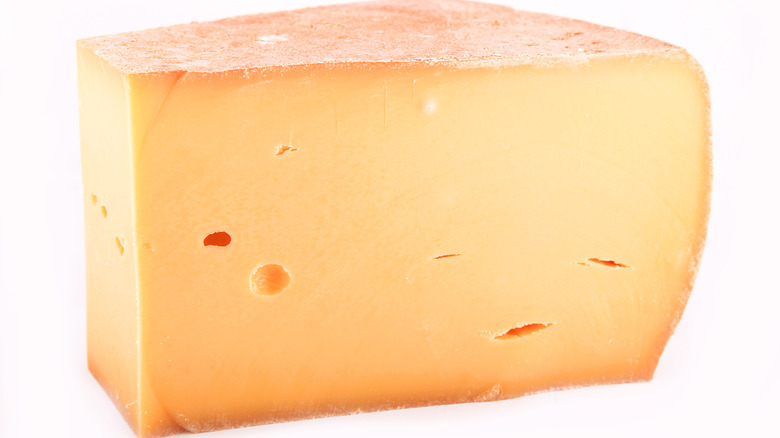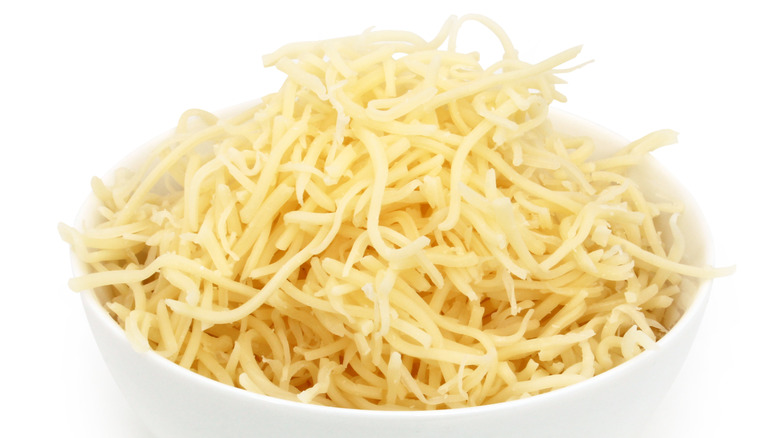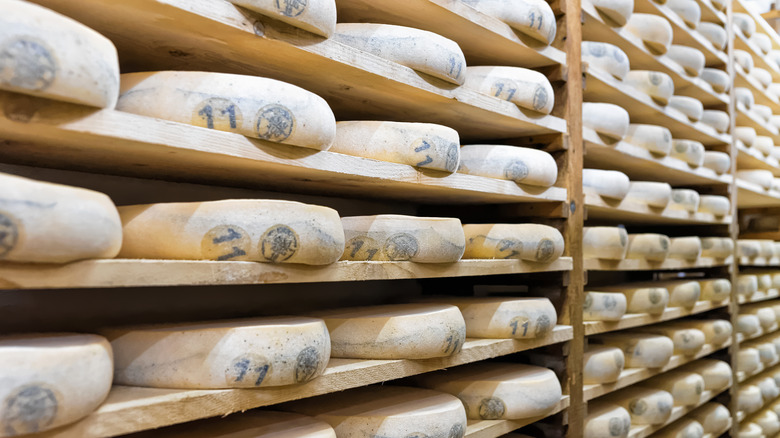What A Recent Ruling Could Mean For One Of Your Favorite Swiss Cheeses
The Swiss town of Gruyères in western Switzerland's Fribourg region has a cheese-making legacy that dates back thousands of years. Legend has it the area's cow herders would take their livestock high up the mountains because the grass was sweet. Because of these trips milking stations were established, and the practice of cheesemaking began (via Alpenwild).
Today, Gruyère AOP is made to very strict specifications. The dairy producers bring milk to the cheesemakers twice a day, allowing the "morning milk" to be mixed with the "evening milk," which is left to sit overnight. The milk is curdled and pressed for 16 hours or more, and the resulting cheese is matured in cellars with 90% humidity at 59 F for anywhere between five to 18 months (via Le Gruyère). Age has an impact on the cheese: younger cheeses are soft and sweet, but the flavor becomes more full as time passes.
The cheese makers of Gruyères are so protective of their product that they set standards for the production of the milk used to make the cheese and the cheesemaking process itself, with the entire process certified by the Swiss Federal Office for Agriculture. So you can only imagine how horrified both the Swiss government and the people of Gruyères might have felt, when a U.S. District Court in Virginia ruled that gruyere cheese doesn't have to come from the region for it to be called that (via The Washington Post).
Gruyere isn't just a cheese made in Switzerland: Judge
Judge T.S. Ellis ruled that the term "gruyere" has ceased to refer only to the cheese made in Switzerland and France because, well, times and circumstances change. In the ruling, Ellis wrote: "It is clear from the record that the term GRUYERE may have in the past referred exclusively to cheese from Switzerland and France. However, decades of importation, production, and sale of cheese labeled GRUYERE produced outside the Gruyère region of Switzerland and France have eroded the meaning of that term and rendered it generic." The decision not to grant gruyere trademark protection is something of a break from the past, because courts have ruled in favor of Roquefort cheese and Cognac brandy before (via The Washington Post).
The decision is being considered a victory for the U.S. Dairy Export Council whose representative, Shawna Morris, said the group was "thrilled that the judge made a great call here, in our view." The Post says Morris also considers the legal battle "an increased effort in Europe to seek international trade protection" for products that include other cheeses like gorgonzola, asiago, and feta.
French and Swiss cheesemakers plan to appeal
It should come as no surprise that the group of French and Swiss cheesemakers who decided to file the lawsuit protecting their cheese heritage are planning to appeal the original decision (via The Washington Post). Since it was established, the European Commission has sought to protect its specialty foods, agricultural products, wines, and spirits. The EU even has a system of designations and seals, which provide specific information like whether a product comes from a specific region and has qualities that link it back to the area it was grown or produced, or if an item is made in a certain way, but it isn't linked to a place of origin in any way. Some food items that are protected under this classification system are Parmigiano Reggiano DOP aka "parmesan" and Aceto Balsamico di Modena PGI or "balsamic vinegar."
Even if Switzerland is not a member of the European Union, Swiss Gruyère is still protected by the "AOP" or "Appellation d'Origine Protégée" (Protected Designation of Origin); the site Cheeses From Switzerland says 11 other cheeses have the same mark.
Since the case will be appealed, it remains to be seen how this will eventually play out for the Swiss, French, and American makers of this distinctive cheese. Perhaps a compromise can be reached that will allow cheese lovers everywhere not just to eat their gruyere, but enjoy their Gruyère AOP too.


